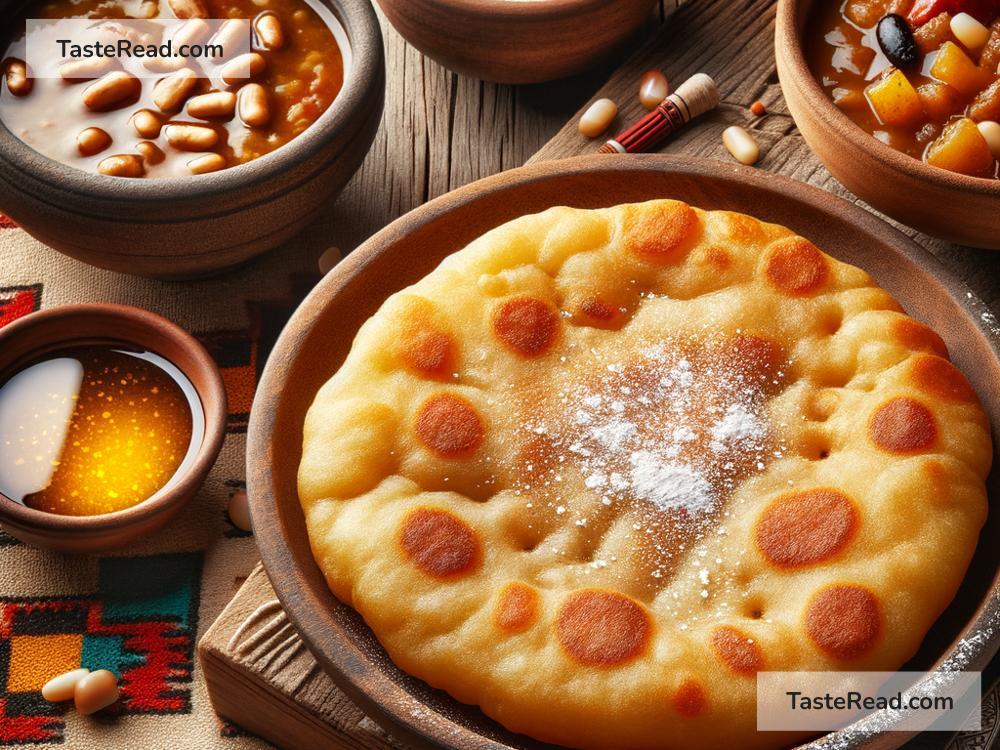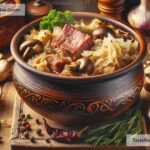Traditional Native American Fry Bread and Its Cultural Significance
Fry bread is a beloved dish in many Native American communities. It is more than just a food—it carries history, resilience, and meaning. For generations, fry bread has been a symbol of survival and tradition, connecting people to their ancestors and shared experiences. This article will explore what fry bread is, its origins, and its deeper cultural significance in simple and easy-to-understand terms.
What Is Fry Bread?
Fry bread is a type of flat, golden-brown bread that is fried in oil, shortening, or lard. It has a crispy outside and a soft, fluffy inside. Fry bread is often made from simple ingredients: flour, water, salt, sugar, and baking powder. These ingredients are mixed into a dough, rolled or stretched, and then fried in hot oil until it puffs up and turns golden.
Fry bread can be enjoyed in many ways. Some eat it plain, while others use it as a base for a dish called “Indian tacos,” topping it with ground meat, beans, cheese, lettuce, and salsa. It can also be sprinkled with powdered sugar or drizzled with honey for a sweet treat.
The History Behind Fry Bread
Fry bread has a complex history. It is believed to have originated during a difficult time for Native American communities. In the 1800s, the United States government forcibly removed many tribes from their ancestral lands, relocating them to unfamiliar areas under harsh conditions. This period, now known as the Trail of Tears, led to widespread hunger, hardship, and displacement.
As part of this forced relocation, the government provided Native Americans with rations of basic ingredients like flour, sugar, salt, and lard. These food items were often insufficient and unfamiliar, but Native people found creative ways to turn them into something nourishing. Fry bread emerged as a way to make the most of what they had. It became a survival food—a way to feed families during challenging times.
Although fry bread is tied to this history of loss and struggle, it is also a powerful reminder of Native resilience. Communities took limited resources and created something that would eventually become an important part of their identity.
Cultural Significance
Today, fry bread is much more than a food. It is a cultural symbol for many Native American tribes. It is often served at gatherings, celebrations, and powwows, bringing people together to share meals and connect with their heritage. Making fry bread is a tradition that is passed down from generation to generation, with families teaching the recipe to their children and grandchildren.
For some, fry bread represents pride and strength. It reminds them of their ancestors’ ability to survive and adapt under adversity. Preparing and eating fry bread can be a way to honor those who came before them. At the same time, fry bread also sparks important conversations about history, identity, and the balance between tradition and change.
While many embrace fry bread as a cherished tradition, others reflect on its complicated origins. Some Native American leaders and activists view fry bread as a reminder of the hardship caused by colonization and government policies that disrupted traditional foodways. Before colonization, Native communities had rich diets based on locally harvested foods like corn, beans, squash, fish, game, and berries. The forced reliance on government rations shifted Indigenous diets and contributed to ongoing health challenges, such as diabetes and obesity.
This dual perspective highlights the need to honor cultural traditions while also addressing broader issues of health, access to traditional foods, and reclaiming ancestral ways of eating.
Fry Bread at Modern Gatherings
Despite its complex history, fry bread remains a celebration of Native culture in the modern day. It is lovingly made at family dinners, festivals, and tribal events. At powwows, fry bread stands are a popular attraction, where people enjoy this classic dish while watching traditional dancing, listening to music, and sharing stories.
For many Native people, making fry bread is a labor of love. The process of kneading the dough, shaping it by hand, and frying it is done with care and pride. It is a reminder of connection—not just to food, but to community and history.
A Dish That Carries Stories
Fry bread is more than a recipe; it is a dish that carries stories. It represents strength, culture, and heritage. It has the power to bring people together while also reminding us of resilience during difficult times. Whether enjoyed at a family gathering or a community celebration, fry bread continues to hold a special place in the hearts of Native Americans.
As we appreciate fry bread, it’s important to recognize its history and the experiences of those who created it. By understanding its origins and cultural significance, we can honor not just the food itself, but the survival and spirit of the people behind it. Fry bread is a powerful symbol of Native American identity—a tradition that blends the past with the present and keeps history alive for future generations.


